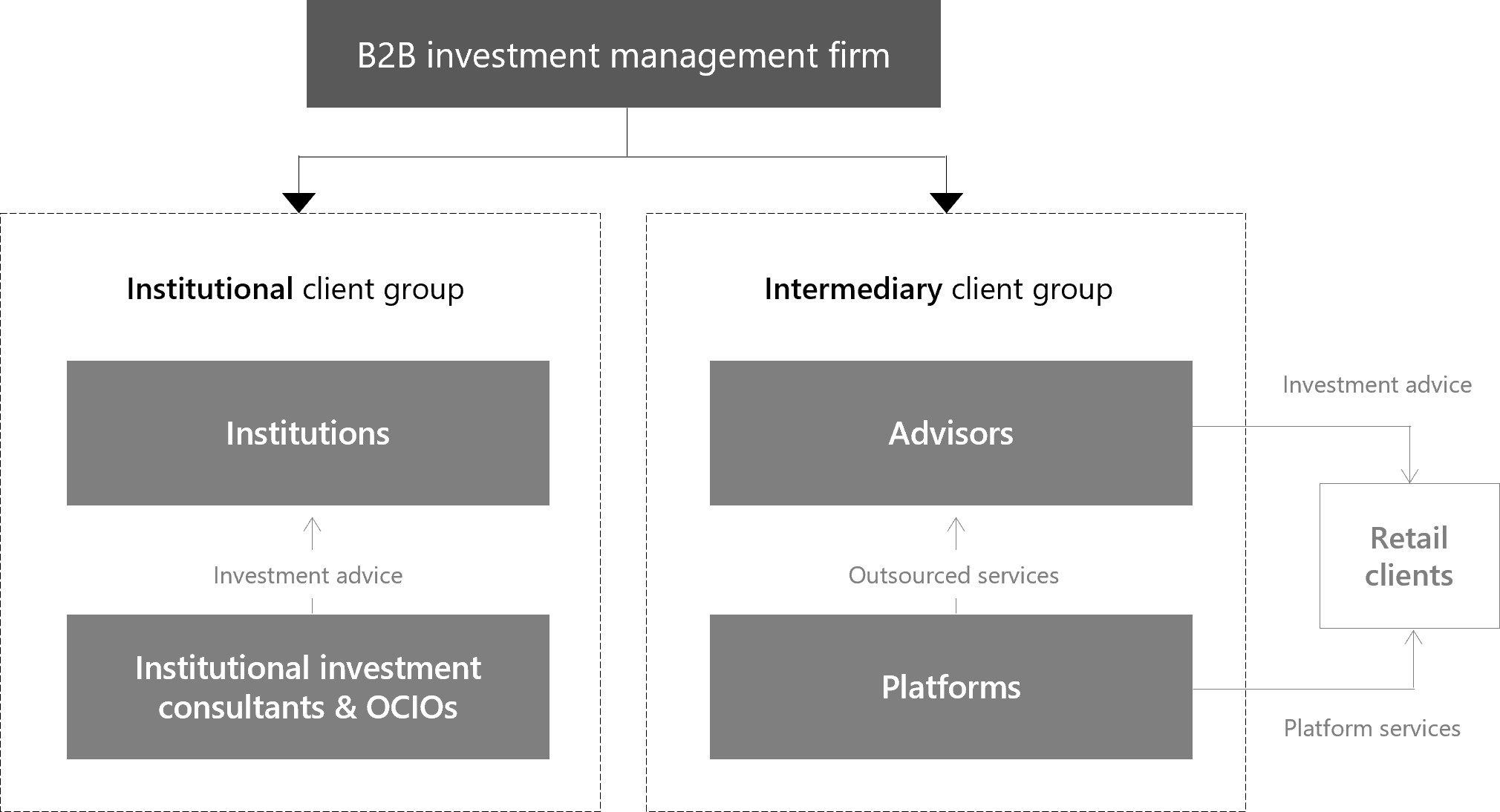Target Audience
The second part of firm research involves defining its target audience.
Organisations & client groups
B2B investment management firms typically work with four main types of organisations, commonly grouped into two client groups: institutional and intermediary. These relationships are visualised in figure 1.

Figure 1: Target organisations for B2B investment managers
Institutional clients
- Institutions — an entity that invests on behalf of itself or others, such as pension funds (investing contributions of plan participants), insurance firms (premiums paid by customers), and sovereign wealth funds (oil revenues).
- Institutional investment consultants & OCIOs — organisations that provide outsourced investment expertise (e.g. asset allocation, manager selection) to institutions that lack the necessary in-house capability.
Intermediary clients
- Financial advisors & wealth managers — professionals or firms that provide investment advice and portfolio management to retail investors. These may be independent or part of larger organisations such as private banks.
- Investment platforms — online services that either offer portfolio management and model portfolio services to advisers who outsource the work or provide retail investors with access to pooled funds from multiple managers in a single place.
Key individuals (contacts)
Although professionals at B2B investment managers interact with many people across target organisations, the firm’s sales team focuses on a specific subset: those who can allocate money, either directly or indirectly, into the firm's products.
We can identify these key individuals based on their job role or function, which fall into one of three categories:
- Provide investment advice — client-facing individuals who advise retail investors (financial advisors, wealth managers, or private bankers) or institutions (field consultants at institutional investment consultants).
- Perform manager research or fund selection — individuals who influence which investments are considered or approved by advice-givers and platforms. They can make a manager, fund or strategy visible to larger networks of investors.
- Construct and manage investment portfolios — individuals who devise investment strategies, make asset allocation decisions, and construct portfolios of investments for investors.
Task
Confirm and document which target organisations and key individuals are relevant for your firm.